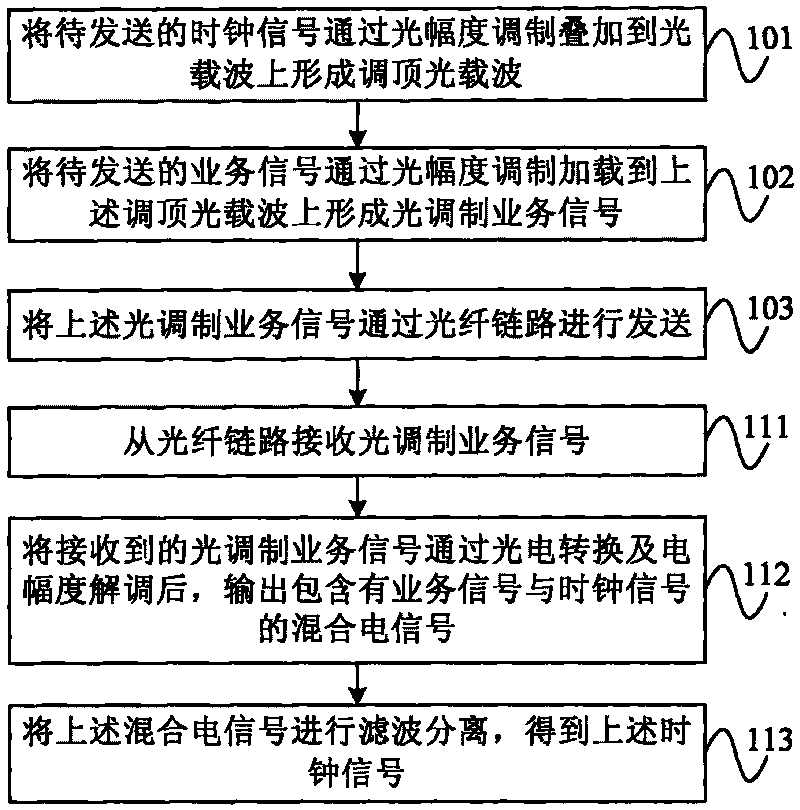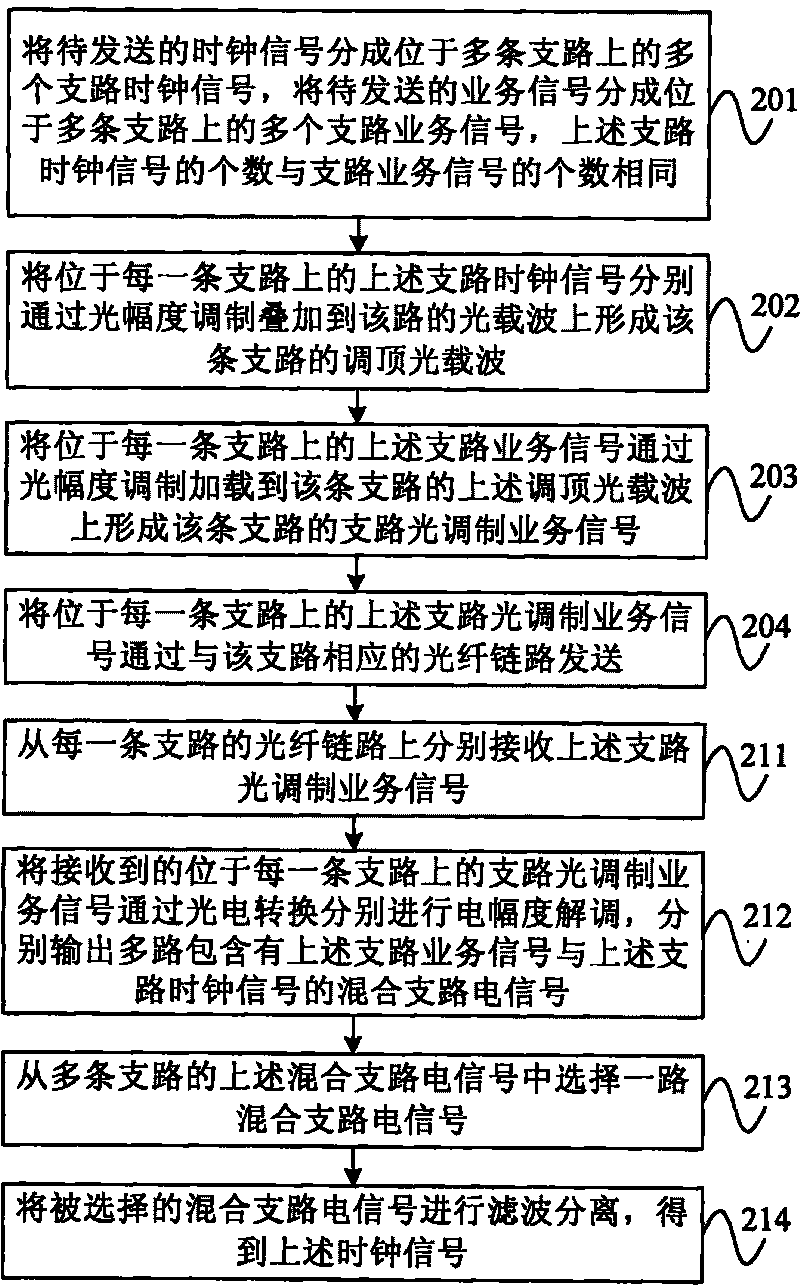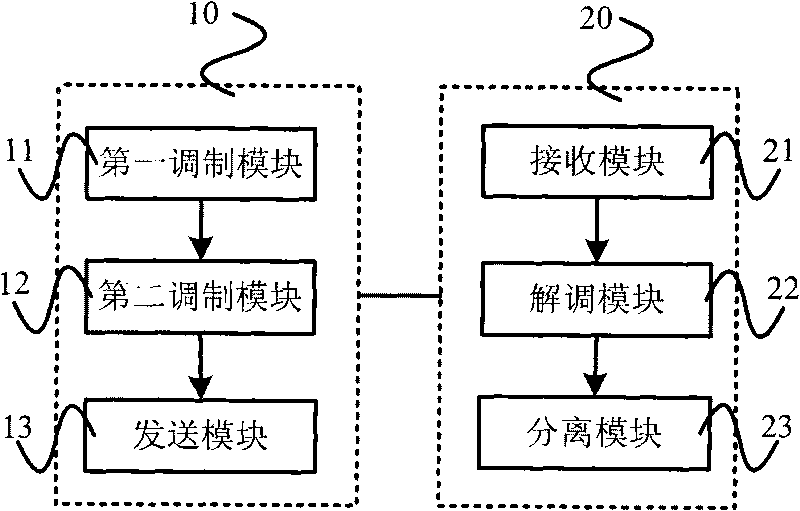Method for sending and receiving clock signal as well as optical transmitter, optical receiver and system thereof
A clock signal and transmission method technology, applied in the field of optical communication, can solve the problems of rising system cost, complex implementation, low bandwidth utilization, etc., and achieve the effect of reducing maintenance cost, easy implementation, and reducing construction cost
- Summary
- Abstract
- Description
- Claims
- Application Information
AI Technical Summary
Problems solved by technology
Method used
Image
Examples
Embodiment 1
[0033] This embodiment provides a clock signal transmission method, such as figure 1 As shown, the following steps are included, wherein the steps 101-103 are the sending method of the clock signal; the steps 111-113 are the receiving method of the clock signal:
[0034] In step 101, a clock signal to be sent is superimposed on an optical carrier through optical amplitude modulation to form a top-tuned optical carrier.
[0035] Wherein, the clock signal refers to an electrical signal used to realize synchronization for an optical transmission system or equipment, and is usually a low-frequency, small-amplitude analog or digital electrical signal. For example, but not limited to, the 8MHz clock signal of the integrated system (Sysplex) timer of the SAN network server, the 2.048MHz, 2.048Mbit clock signal of the PDH, and the like. In this step, the clock signal is used as a top adjustment signal to modulate the optical carrier, so that the top envelope of the optical carrier ch...
Embodiment 2
[0050] This embodiment provides another clock signal transmission method, such as figure 2 As shown, the following steps are included, wherein the steps 201-204 are the sending method of the clock signal; the steps 211-214 are the receiving method of the clock signal:
[0051] Step 201: Divide the clock signal to be sent into multiple branch clock signals located on multiple branch roads, divide the service signal to be sent into multiple branch service signals located on multiple branch roads, each of the above branch clock signals The number is the same as the number of the above branch service signals.
[0052] For example, the clock signal to be sent may be divided into two branch clock signals located on two branches; the service signal to be sent may be divided into two branch service signals located on two branches. Among them, compared with the original clock signal, the tributary clock signal has the same signal parameters as the original clock signal except that th...
PUM
 Login to View More
Login to View More Abstract
Description
Claims
Application Information
 Login to View More
Login to View More - R&D
- Intellectual Property
- Life Sciences
- Materials
- Tech Scout
- Unparalleled Data Quality
- Higher Quality Content
- 60% Fewer Hallucinations
Browse by: Latest US Patents, China's latest patents, Technical Efficacy Thesaurus, Application Domain, Technology Topic, Popular Technical Reports.
© 2025 PatSnap. All rights reserved.Legal|Privacy policy|Modern Slavery Act Transparency Statement|Sitemap|About US| Contact US: help@patsnap.com



